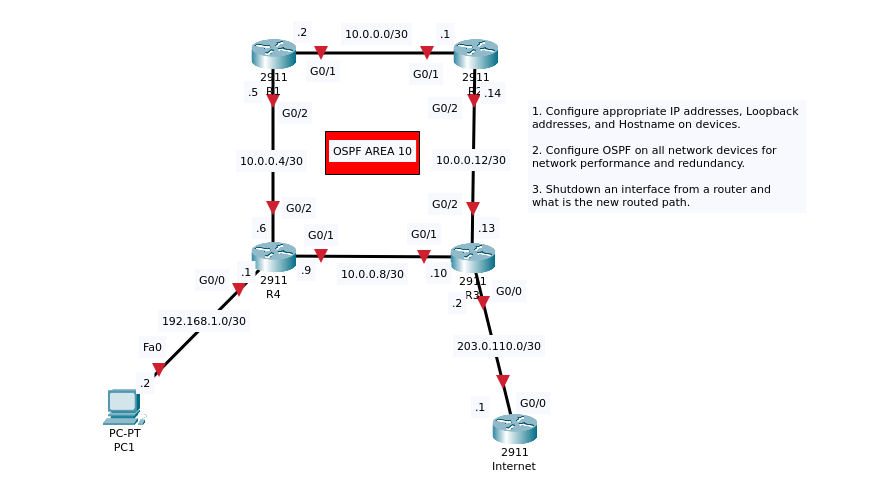Configuring OSPF

<WHAT>
Let’s talk about how to use the Open Shortest Path First (OSPF) routing protocol to share routes with neighboring routers. It’s way more efficient than setting up static routes. OSPF is a link-state routing protocol, which means that each router creates a “connectivity map” of the network. This happens when routers share details about their interfaces with their neighbors, spreading that info across the whole network.
<WHY>
Link-state protocols like OSPF usually react faster to changes in the network compared to distance vector protocols like RIP and IGRP. I’ll dive into distance vector protocols later, but for now, OSPF is the star of the show. Just keep in mind that OSPF can be more resource-intensive since it requires more CPU power to share information with other routers.
Imagine you have a network of 25 routers, and 2 of them are connected to an Internet Service Provider (ISP). If the active link to the ISP starts having issues, how do the other routers find the next best path? With OSPF, routers exchange Link-State Advertisements (LSAs) with their neighbors, which helps update their routing tables and find alternative paths to the ISP.
<DEMONSTRATION>
This lab will demonstrate my knowledge and skills in configuring OSPF and ensuring redundancy on a given network while troubleshooting for any connectivity issues.